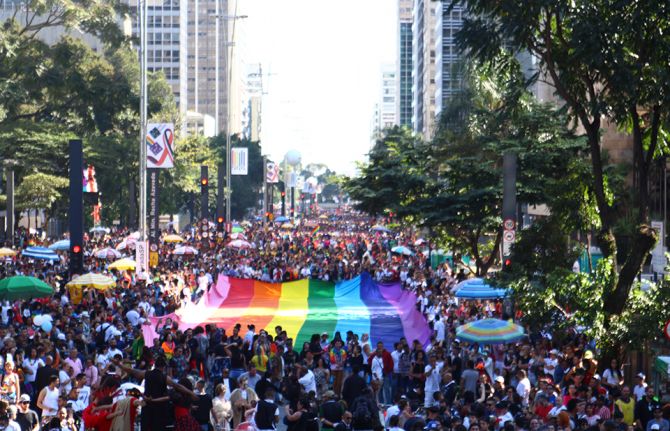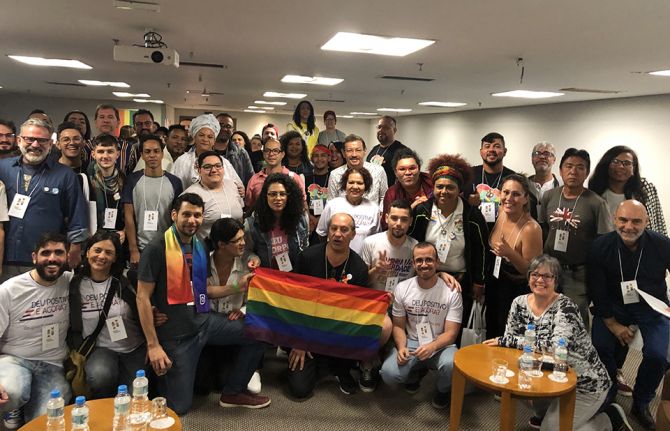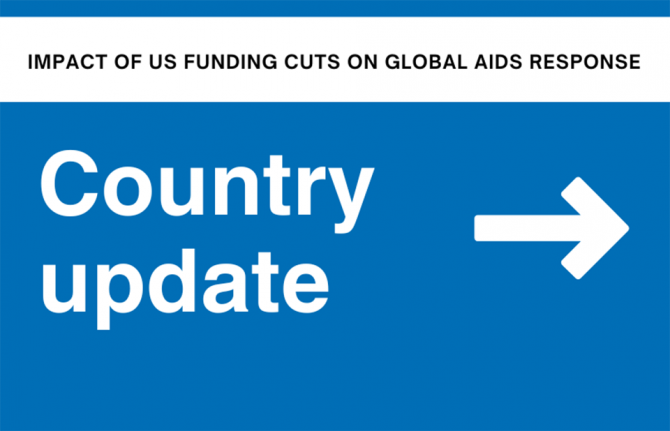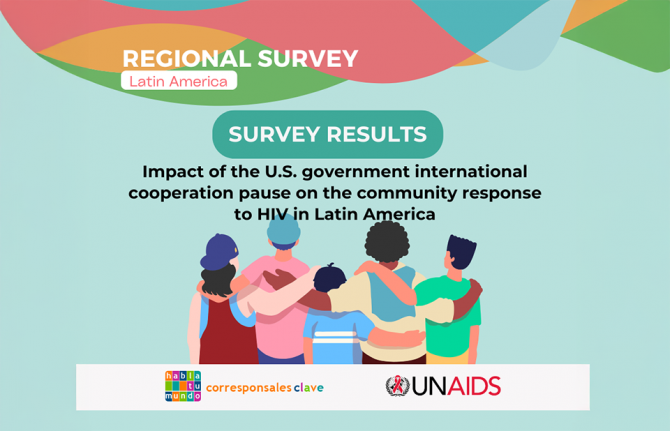


Feature Story
Putting HIV prevention back at the centre of Brazil’s LGBTI pride
17 October 2019
17 October 2019 17 October 2019In June 2019, more than 3 million people took to the streets of São Paulo, Brazil, to celebrate lesbian, gay, bisexual, transgender and intersex (LGBTI) pride and to mark the 50th anniversary of the Stonewall riots, a turning point in the struggle for LGBTI rights. For gay entrepreneur Almir Nascimento, 2019 marked a return to involvement in the event’s organization after a 20-year break.
What prompted Mr Nascimiento’s pride comeback was a rising unease about the increasing number of new HIV infections in Brazil among young people, especially among young gay men and transgender women. For many years, he thought that the mobilization of the 1990s and the arrival of antiretroviral therapy would be enough to end the HIV epidemic.
“The epidemic was at its height when I first joined pride as one of the organizers in 1999 and 2000. Back then, it seemed to me that we had made significant achievements, and I thought it would be enough to stop HIV”, recalls Mr Nascimento. “But four to five years ago, I began to notice that a lot of young gay, bisexual and transgender people were getting infected with HIV again, and even worse they were dying of AIDS-related illnesses at a really young age. This situation motivated me to come back and support the parade organizers in promoting an open discussion about HIV and AIDS inside our community.”
In 2018, there were around 900 000 people living with HIV in Brazil, with new HIV infections up by more than 20% since 2010. While HIV prevalence in Brazil among the adult population is estimated to be 0.5%, among transgender people it stands at around 30% and among gay men and other men who have sex with men at round 18.3%.
Mr Nascimento is the owner of a gay sauna in São Paulo and says he has always made efforts to ensure that his customers have the knowledge and tools to prevent HIV and other sexually transmitted infections. He partners with the São Paulo health authorities to distribute free condoms, for example. More recently, health researchers have been welcomed to the sauna to recruit people interested in participating in pilot programmes for PrEP (pre-exposure prophylaxis), a pill that can prevent people becoming infected with HIV.
“There is no denying that gay men and transgender people are the most affected populations here in Brazil. And I realized that the lesbian, gay, bisexual and transgender parades, including the São Paulo one, no longer had effective HIV initiatives within their associations,” he says. “Because of that, we decided to call a meeting with the 27 parades representing each of Brazil’s state capitals and a dozen others from the most important cities in São Paulo State. Altogether, we estimate they reach over 18 million people every year.”
Because the numbers are so huge, Mr Nascimento believes there is not only an opportunity but also a responsibility to convey HIV prevention and zero discrimination messages to the LGBTI community.
“There is still resistance among some parade organizers to link the festivities with AIDS-related discussions because of the fear of stigma and discrimination. But everyone is together during these events and we must take advantage of that to generate candid discussions to educate people about HIV prevention, which can save lives.”
With the support of the UNAIDS office in Brazil and other key partners, Mr Nascimento and the São Paulo LGBT Pride Parade Association are now preparing for the third LGBTI Youth Health and Prevention Meeting, to be held in November.
“After our first meeting in 2017 focusing on HIV prevention among young lesbian, gay, bisexual and transgender people, over a fifth of the participating parade associations have now started the same discussions in their cities. That’s what we want: that every pride president learns how to conduct them and that they hold their own meetings during pride week and indeed throughout the year.”


